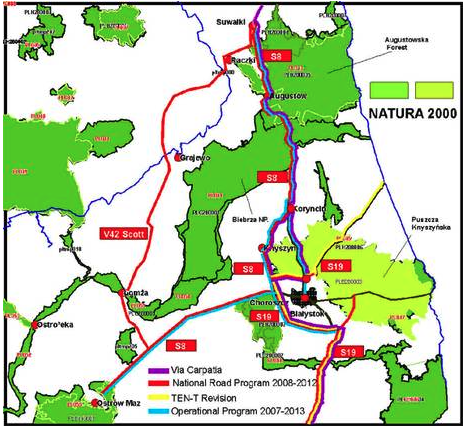Sleeping Spot Via Carpatia
The Polish Government has recently revealed new and extensive plans for road infrastructure development along the environmentally damaging original planned route for the Via Baltica (Route S-8 North from Białystok) and South of Bialystok (Road S-19). This corridor has been named Via Carpatia, and is planned as an international transit road between Lithuania, Poland, Slovakia and Hungary. Four individual road projects along Via Carpatia are currently the subject of European Commission infringement proceedings. This includes damage to the Knyszyn Primeval Forest and to the world famous Biebrza Marshes, both Natura 2000 sites protected by EU law. The European Commission continued to raise concerns about these projects in a supplementary letter of formal notice (sent to Poland around 19th March 2009).
The Polish Ministry of Infrastructure has proposed changes to the Polish part of the EU’s Trans-European Transport network (TEN-T), including the Via Carpatia – a new south-north corridor along the eastern border of Poland. The section of Via Carpatia North of Białystok overlaps with the most environmentally harmful route for Via Baltica (which was rejected by the SEA) and affects 2 Natura 2000 sites: Knyszyn Primeval Forest and Biebrza Marshes. No SEA is being carried out for the Via Carpatia. Instead the planned road has been divided into several sections for which separate EIAs are being conducted. This kind of approach makes it impossible to select an environmentally acceptable option for the entire corridor. If the Via Carpatia is to be considered a serious option, an SEA must be completed to inform route selection.
Furthermore, the Polish changes to the TEN-T network ignore the result of the SEA for the Via Baltica and do not propose changes to the routing of the Via Baltica corridor (also known as the 1st Pan-European corridor).



